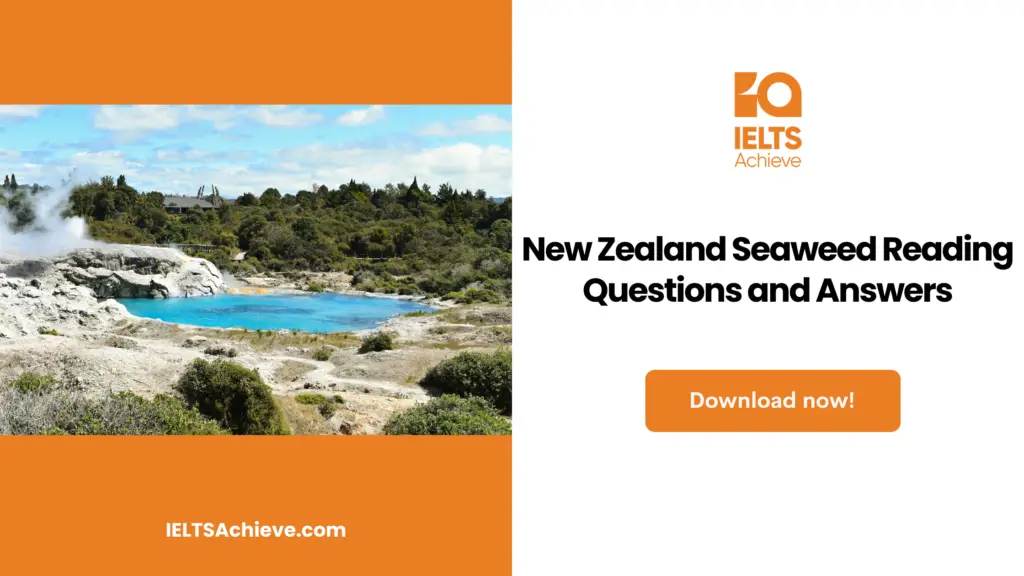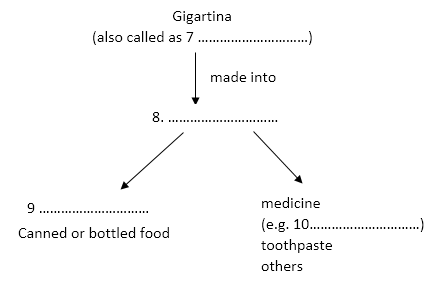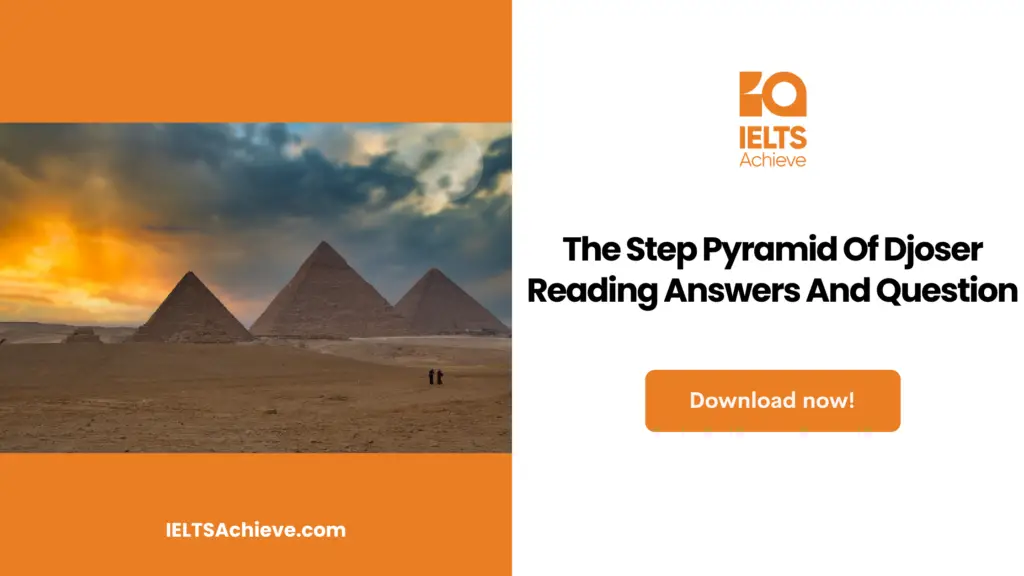The Blog post contains the following IELTS Reading Questions:
- IELTS Reading Matching Headings
- IELTS Reading Flowchart Completion
Stay informed and prepared for success – Explore our comprehensive Reading Test Info page to get valuable insights, exam format details, and expert tips for mastering the IELTS Reading section.
IELTS Reading Passage – New Zealand Seaweed

New Zealand Seaweed
Section A
Seaweed is a particularly nutritious food, which absorbs and concentrates traces of a wide variety of minerals necessary to the body’s health. Many elements may occur in seaweed – aluminium, barium, calcium, chlorine, copper, iodine and iron, to name but a few – traces normally produced by erosion and carried to the seaweed beds by river and sea currents. Seaweeds are also rich in vitamins: indeed, Eskimos obtain a high proportion of their bodily requirements of vitamin C from the seaweeds they eat.
The nutritive value of seaweed has long been recognised. For instance, there is a remarkably low incidence of goitre amongst the Japanese, and for that matter, amongst our own Maori people, who have always eaten seaweeds, and this may well be attributed to the high iodine content of this food. Research into old Maori eating customs shows that jellies were made using seaweeds, fresh fruit and nuts, fuchsia and tutu berries, cape gooseberries, and many other fruits which either grew here naturally or were sown from seeds brought by settlers and explorers.
Section B
New Zealand lays claim to approximately 700 species of seaweed, some of which have no representation outside this country. Of several species grown worldwide, New Zealand also has a particularly large share. For example, it is estimated that New Zealand has some 30 species of Gigartina, a close relative of carrageen or Irish moss. These are often referred to as the New Zealand carrageens. The gel-forming substance called agar which can be extracted from this species gives them great commercial applications in seameal, from which seameal custard is made, and in cough mixture, confectionery, cosmetics, the canning, paint and leather industries, the manufacture of duplicating pads, and in toothpaste. In fact, during World War II, New Zealand Gigartina were sent to Australia to be used in toothpaste.
Section C
Yet although New Zealand has so much of the commercially profitable red seaweeds, several of which are a source of agar (Pterocladia, Gelidium, Chondrus, Gigartina), before 1940 relatively little use was made of them. New Zealand used to import the Northern Hemisphere Irish moss (Chondrus crispus) from England and ready-made agar from Japan. Although the distribution of the Gigartina is confined to certain areas according to species, it is only on the east coast of the North Island that its occurrence is rare. And even then, the east coast, and the area around Hokianga, have a considerable supply of the two species of Pterocladia from which agar is also available. Happily, New Zealand-made agar is now obtainable in health food shops.
Section D
Seaweeds are divided into three classes determined by colour – red, brown and green – and each tends to live in a specific location. However, except for the unmistakable sea lettuce (Ulva), few are totally one colour; and especially when dry, some species can change colour quite significantly – a brown one may turn quite black, or a red one appear black, brown, pink or purple.
Identification is nevertheless facilitated by the fact that the factors which determine where a seaweed will grow are quite precise, and they, therefore, tend to occur in very well-defined zones. Although there are exceptions, the green seaweeds are mainly shallow-water algae; the browns belong to medium depths, and the reds are plants of the deeper water. Flat rock surfaces near mid-level tides are the most usual habitat of sea bombs, Venus’ necklace and most brown seaweeds. This is also the location of the purple laver or Maori karengo, which looks rather like a reddish-purple lettuce. Deep-water rocks on open coasts, exposed only at very low tide, are usually the site of bull kelp, strap weeds and similar tough specimens. Those species able to resist long periods of exposure to the sun and air are usually found on the upper shore, while those less able to stand such exposure occur nearer to or below the low-water mark. Radiation from the sun, the temperature level, and the length of time immersed all play a part in the zoning of seaweeds.
Section E
Propagation of seaweeds occurs by spores, or by fertilisation of egg cells. None have roots in the usual sense; few have leaves, and none have flowers, fruits or seeds. The plants absorb their nourishment through their fronds when they are surrounded by water: the base or “holdfast” of seaweeds is purely an attaching organ, not an absorbing one.
Section F
Some of the large seaweeds maintain buoyancy with air-filled floats; others, such as bull kelp, have large cells filled with air. Some, which spend a good part of their time exposed to the air, often reduce dehydration either by having swollen stems that contain water, or they may (like Venus’ necklace) have | swollen nodules, or they may have a distinctive shape like a sea bomb. Others, like the sea cactus, are filled with slimy fluid or have a coating of mucilage on the surface. In some of the larger kelps, this coating is not only to keep the plant moist but also to protect it from the violent action of waves.
Unlock your full potential in the IELTS Reading section – Visit our IELTS Reading Practice Question Answer page now!
Recommended Questions:
Renewable Energy IELTS Reading Question with Answer
Questions 1-6
Reading Passage 214 has six sections A-F.
Choose the correct heading for each section from the list of headings below.
Write the correct number i-x in boxes 1-6 on your answer sheet.
List of Headings
i Locations and features of different seaweeds
ii Various products of seaweeds
iii Use of seaweeds in Japan
iv Seaweed species around the globe
v Nutritious value of seaweeds
vi Why it doesn’t dry or sink
vii Where to find red seaweeds
viii Underuse of native species
ix Mystery solved
x How seaweeds reproduce and grow
Ready to conquer Matching Headings questions? Click here to learn essential tips and techniques for matching headings accurately to paragraphs or sections in the IELTS Reading section.
Questions 7-10
Complete the flow chart below.
Choose NO MORE THAN THREE WORDS from the passage for each answer.
Write your answers in boxes 7-10 on your answer sheet.

Boost your performance in Summary, Notes, Table, and Flowchart Completion tasks. Click here to explore our detailed guide and learn how to effectively complete summaries, notes, tables, and flowcharts in the IELTS Reading section.
Questions 11-13
Classify the following description as relating to
A Green seaweeds
B Brown seaweeds
C Red seaweeds
Write the correct letter A, B, or C in boxes 11-13 on your answer sheet.
11. Can resist exposure to sunlight at high-water mark
12. Grow in far open sea water
13. Share their habitat with karengo
Unlock your full potential in the IELTS Reading section – Visit our IELTS Reading Practice Question Answer page now!
Recommended Questions:
Renewable Energy IELTS Reading Question with Answer
Answer:
1. v
2. ii
3. viii
4. i
5. x
6. vi
7. New Zealand carrageens
8. agar
9. seameal
10. cough mixture
11. A
12. C
13. B

We hope you found this post useful in helping you to study for the IELTS Test. If you have any questions please let us know in the comments below or on the Facebook page.
The best way to keep up to date with posts like this is to like us on Facebook, then follow us on Instagram and Pinterest. If you need help preparing for the IELTS Test, join the IELTS Achieve Academy and see how we can assist you to achieve your desired band score. We offer an essay correction service, mock exams and online courses.
